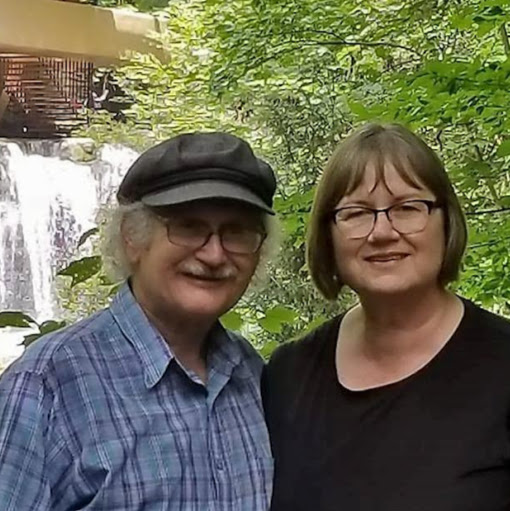John A Snavely
age ~46
from Seattle, WA
- Also known as:
-
- John Alan Snavely
- Navaly S John
- Phone and address:
- 2112 NW 70Th St, Seattle, WA 98117
John Snavely Phones & Addresses
- 2112 NW 70Th St, Seattle, WA 98117
- Lopez Island, WA
- San Jose, CA
- Poway, CA
- Brooklyn, NY
- Somerville, MA
- East Cambridge, MA
Resumes

Principal Design Manager
view sourceLocation:
Seattle, WA
Industry:
Design
Work:
Samsung Jul 2012 - May 2013
Creative Director
Microsoft Jul 2012 - May 2013
Principal Design Manager
Microsoft Apr 2008 - Jul 2012
Design Lead
Invivia Inc. Jan 2006 - Apr 2008
Designer
American Museum of Natural History Oct 2001 - Jul 2004
Technical Assistant
Creative Director
Microsoft Jul 2012 - May 2013
Principal Design Manager
Microsoft Apr 2008 - Jul 2012
Design Lead
Invivia Inc. Jan 2006 - Apr 2008
Designer
American Museum of Natural History Oct 2001 - Jul 2004
Technical Assistant
Education:
Massachusetts Institute of Technology 2004 - 2008
Dartmouth College 1997 - 2001
Bachelors, Bachelor of Arts, Computer Science, Studio Art
Dartmouth College 1997 - 2001
Bachelors, Bachelor of Arts, Computer Science, Studio Art
Skills:
User Interface Design
Design Strategy
User Experience
Interaction Design
User Centered Design
User Experience Design
User Interface
Visual Design
Product Design
Concept Design
Information Architecture
Experience Design
Rapid Prototyping
Adobe Creative Suite
Graphic Design
Human Computer Interaction
Design Thinking
Architecture
Indesign
User Research
Web Design
Concept Art
Mobile Design
Actionscript
Css
Usability Testing
Design Strategy
User Experience
Interaction Design
User Centered Design
User Experience Design
User Interface
Visual Design
Product Design
Concept Design
Information Architecture
Experience Design
Rapid Prototyping
Adobe Creative Suite
Graphic Design
Human Computer Interaction
Design Thinking
Architecture
Indesign
User Research
Web Design
Concept Art
Mobile Design
Actionscript
Css
Usability Testing

John Snavely
view source
John Snavely
view sourceLocation:
United States
Name / Title
Company / Classification
Phones & Addresses
Owner
Always and Forever
Photographers - Commercial
Photographers - Commercial
(1/2003), PO Box 1708, EL Cerrito, CA 94530-4708
5103933311
5103933311
Founder
Prudential Kansas City Realty
14428 Un Ave, San Jose, CA 95124
9139812800
9139812800
VINTAGE GLEN LTD
ORANGE PLACE, LTD
SNAVELY HOTEL SERVICES LIMITED LIABILITY COMPANY
Us Patents
-
Dual Module Portable Devices
view source -
US Patent:8121640, Feb 21, 2012
-
Filed:Mar 19, 2009
-
Appl. No.:12/407089
-
Inventors:V. Kevin Russ - Bellevue WA, US
John A. Snavely - Seattle WA, US
Edwin R. Burtner - Everett WA, US
Ian M. Sands - Seattle WA, US -
Assignee:Microsoft Corporation - Redmond WA
-
International Classification:H04M 1/00
-
US Classification:4555561, 455566, 4555501, 345173
-
Abstract:A dual module portable device may be provided. A motion of a first module of the dual module portable device may be detected. Based at least in part on the detected motion, a position of the first module may be determined relative to the second module of the portable device. Once the relative position of the first module has been determined, a portion of a user interface associated with the relative position may be displayed at the first module.
-
Timed Location Sharing
view source -
US Patent:8165799, Apr 24, 2012
-
Filed:May 22, 2009
-
Appl. No.:12/471073
-
Inventors:John Snavely - Seattle WA, US
Kevin Russ - Bellevue WA, US
Ian Sands - Seattle WA, US
Russ Burtner - Everett WA, US -
Assignee:Microsoft Corporation - Redmond WA
-
International Classification:G01C 21/00
-
US Classification:701400
-
Abstract:Rule-based location sharing may be provided. A location determining device, such as a Global Positioning System (GPS) enabled device, may receive a request to share the location. A rule may be used to determine whether to share the location with the requestor. If the rule allows the location to be shared, the location may be sent to the requestor. The location may be relayed through a third party server, which may be operative to evaluate the rule before sharing the location with the requestor.
-
Virtual Inking Using Gesture Recognition
view source -
US Patent:8386963, Feb 26, 2013
-
Filed:May 28, 2009
-
Appl. No.:12/474212
-
Inventors:V. Kevin Russ - Bellevue WA, US
Ian M. Sands - Seattle WA, US
John A. Snavely - Seattle WA, US
Edwin Russ Burtner - Everett WA, US -
Assignee:Microsoft Corporation - Redmond WA
-
International Classification:G06F 3/01
G06F 3/033
G06F 3/14 -
US Classification:715863, 715702, 715864
-
Abstract:A virtual inking device is created in response to a touch input device detecting a user's inking gesture. For example, when a user places one of their hands in a pen gesture (i. e. by connecting the index finger with the thumb while holding the other fingers near the palm), the user may perform inking operations. When the user changes the pen gesture to an erase gesture (i. e. making a fist) then the virtual pen may become a virtual eraser. Other inking gestures may also be utilized.
-
Projected Way-Finding
view source -
US Patent:20100241348, Sep 23, 2010
-
Filed:Mar 19, 2009
-
Appl. No.:12/407058
-
Inventors:V. Kevin Russ - Bellevue WA, US
John A. Snavely - Seattle WA, US
Edwin R. Burtner - Everett WA, US
Ian M. Sands - Seattle WA, US -
Assignee:Microsoft Corporation - Redmond WA
-
International Classification:G01C 21/36
-
US Classification:701201
-
Abstract:Navigation information may be provided. First, a destination location may be received at a portable device. Next, a current location of the portable device maybe detected. Then, at least one way-point may be calculated based on the current location and the destination location. An orientation and a level of the portable device may be determined and the at least one way-point may then be projected from the portable device.
-
Tear-Drop Way-Finding User Interfaces
view source -
US Patent:20100241987, Sep 23, 2010
-
Filed:Mar 19, 2009
-
Appl. No.:12/407009
-
Inventors:V. Kevin Russ - Bellevue WA, US
John A. Snavely - Seattle WA, US
Edwin R. Burtner - Everett WA, US
Ian M. Sands - Seattle WA, US -
Assignee:Microsoft Corporation - Redmond WA
-
International Classification:G06F 3/048
-
US Classification:715784, 715810
-
Abstract:A tear-drop way-finding user interface (UI) may be provided. A first UI portion corresponding to a device location may be provided. In addition, an object may be displayed at a first relative position within the first UI portion. Then, upon a detected change in device location, a second UI portion corresponding to the changed device location may be provided. In response to the changed device location, a second relative position of the object may be calculated. Next, a determination may be made as to whether the second relative position of the object is within a displayable range of the second UI portion. If the second relative position of the object is not within the displayable range of the second UI portion, then a tear-drop icon indicative of the second relative position of the object may be displayed at an edge of the second UI portion.
-
Canvas Manipulation Using 3D Spatial Gestures
view source -
US Patent:20100241999, Sep 23, 2010
-
Filed:Mar 19, 2009
-
Appl. No.:12/407128
-
Inventors:V. Kevin Russ - Bellevue WA, US
John A. Snavely - Seattle WA, US
Edwin R. Burtner - Everett WA, US
Ian M. Sands - Seattle WA, US -
Assignee:Microsoft Corporation - Redmond WA
-
International Classification:G06F 3/033
-
US Classification:715863, 715848
-
Abstract:User interface manipulation using three-dimensional (3D) spatial gestures may be provided. A two-dimensional (2D) user interface (UI) representation may be displayed. A first gesture may be performed, and, in response to the first gesture's detection, the 2D UI representation may be converted into a 3D UI representation. A second gesture may then be performed, and, in response to the second gesture's detection, the 3D UI representation may be manipulated. Finally, a third gesture may be performed, and, in response to the third gesture's detection, the 3D UI representation may be converted back into the 2D UI representation.
-
Grid Windows
view source -
US Patent:20100293501, Nov 18, 2010
-
Filed:May 18, 2009
-
Appl. No.:12/467983
-
Inventors:Kevin Russ - Bellevue WA, US
John Snavely - Seattle WA, US
Ian Sands - Seattle WA, US
Russ Burtner - Everett WA, US -
Assignee:Microsoft Corporation - Redmond WA
-
International Classification:G06F 3/048
-
US Classification:715803
-
Abstract:Embodiments of the present invention are directed toward facilitating multi-user input on large format displays. In situations where multiple users may want to work individually on separate content, or individually on the same content, embodiments of the present invention provide an interface allowing a user or users to segment a display in a way to create isolated areas in which multiple users may manipulate content independently and concurrently.
-
Two Sided Slate Device
view source -
US Patent:20100295794, Nov 25, 2010
-
Filed:May 20, 2009
-
Appl. No.:12/469592
-
Inventors:Kevin Russ - Bellevue WA, US
Ian Sands - Seattle WA, US
Russ Burtner - Everett WA, US
John Snavely - Seattle WA, US -
Assignee:Microsoft Corporation - Redmond WA
-
International Classification:G06F 3/041
-
US Classification:345173
-
Abstract:Embodiments of the present invention provide a dual-sided multi-touch computing device that offers the advantages of a keyboard in addition to the conveniences of a slate device. The dual-sided multi-touch computing device may be utilized in two orientations; one side is a multi-touch slate device, and the alternate side is a multi-touch display keyboard. The device is configured with an orientation-recognition device, so that it may be configured based on its orientation. The present invention may be utilized as a stand alone personal computer or as a peripheral device in conjunction with other devices.
Googleplus

John Snavely

John Snavely

John Snavely

John Snavely

John Snavely

John Snavely

John Snavely

John Snavely
view source
John Snavely
view source
John Snavely
view source
John Snavely
view source
John Snavely
view source
John Snavely
view source
John Snavely s
view source
John Snavely
view sourceClassmates

John Snavely
view sourceSchools:
First Academy Orlando FL 2001-2005
Community:
Mike Hall, Kristen Brewer

John Snavely, Dulaney Hig...
view source
First Academy, Orlando, F...
view sourceGraduates:
James Hollister (1996-2000),
Kate Simmons (1990-1994),
John Snavely (2001-2005),
Meredith Rhein (2004-2008)
Kate Simmons (1990-1994),
John Snavely (2001-2005),
Meredith Rhein (2004-2008)

Dulaney High School, Timo...
view sourceGraduates:
John Snavely (1975-1979),
Jean Collard (1986-1990),
Heidi Musgrove (1995-1999),
Kurian Jr (1989-1993),
Shawn Christopher (1992-1996)
Jean Collard (1986-1990),
Heidi Musgrove (1995-1999),
Kurian Jr (1989-1993),
Shawn Christopher (1992-1996)

University of Southern Ca...
view sourceGraduates:
John Snavely (1994-1997),
Louann Reitz (1970-1975),
Bob Svihus (1961-1968),
Leymoine Bolton (1983-1988),
Debbie Michels (1989-1993)
Louann Reitz (1970-1975),
Bob Svihus (1961-1968),
Leymoine Bolton (1983-1988),
Debbie Michels (1989-1993)
Myspace
Youtube
Get Report for John A Snavely from Seattle, WA, age ~46





